Your trees and shrubs are such a beloved part of your yard not only for the aesthetic value they offer, but also for the shade they might cast over certain areas of your property. If it weren’t for that one, strategically placed tree, your patio might be unbearable on hot summer days. Plus, you have the thoughtful layer of trees and shrubs around your perimeter which provides you with much-appreciated privacy.
Your trees and shrubs are important to you and the last thing you want to see is something happen to them. You might know a family member or friend who had a tree succumb to disease and required removal. Not only can this be a costly expense (and a hassle), but it also means you’ve now lost that shade, or privacy, that your tree provided.
Fortunately, we have this helpful resource about tree diseases in Ohio and how to treat them.
Common Tree Diseases in Ohio and Kentucky
You may think that plants thrive well on their own, but this is not the typical case in residential landscapes in Ohio and Kentucky.
Trees and shrubs face a number of foes such as damaging fungi and diseases which are quite prevalent. Your plants may have been affected by these pathogens for some time, unbeknownst to you. Usually, it’s not until the problem has become advanced until a homeowner realizes there is a substantial concern.
The first line of defense is recognizing and understanding the most common tree diseases in Ohio and Kentucky:
1. Needlecasts
Needlecast diseases are caused by various fungi that infect the new needles of evergreens such as Pines, Spruce, and Douglas Fir.
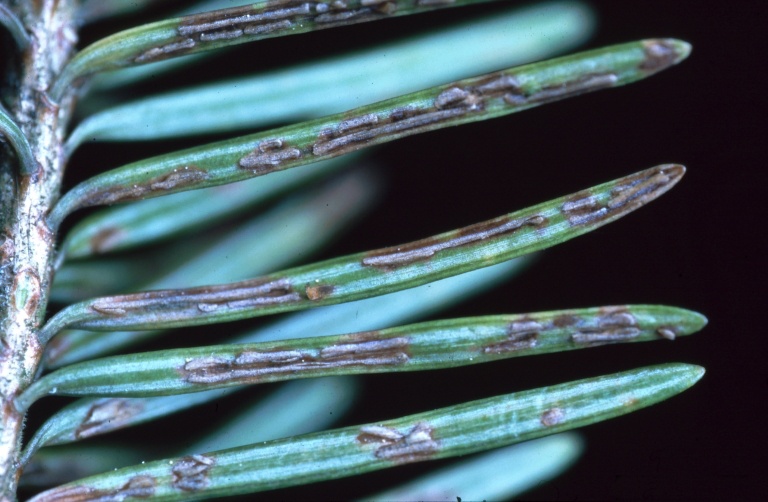
Needlecast fungi form small structures on the infected needle in which thousands of spores form. Once infected, the needles will change colors and ultimately fall off.
2. Powdery Mildew
This common tree disease gets its name for the powdery white substance that appears on an infected tree’s leaf surface.
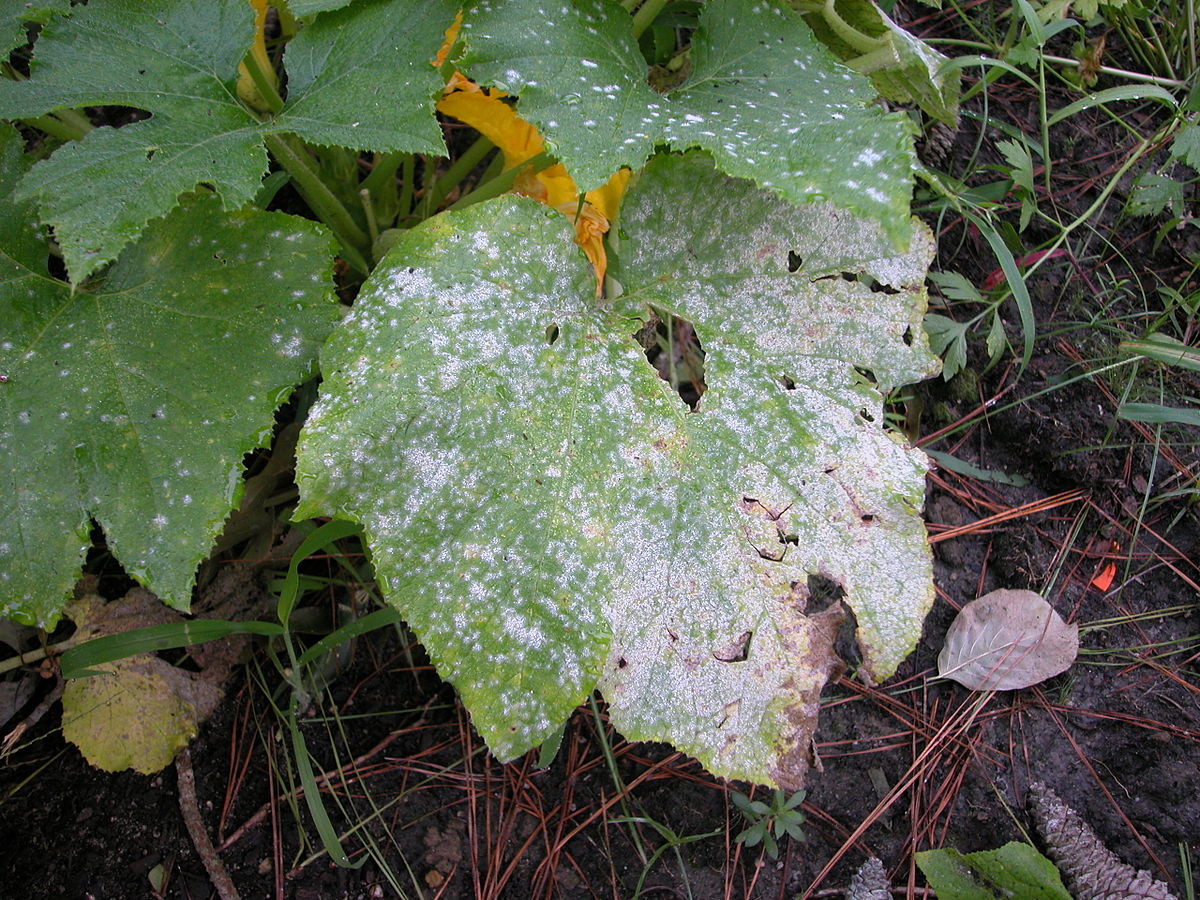
The powdery appearance is the result of millions of tiny fungal spores. Powdery mildew disease attacks many types of plants.
3. Apple Scab
The apple scab fungus is one that attacks both wild and cultivated apple and crabapple trees. It attacks both the leaves and the fruit. Symptoms include pale yellow or olive-green spots on the upper surface of the leaves and dark spots on the lower surface.
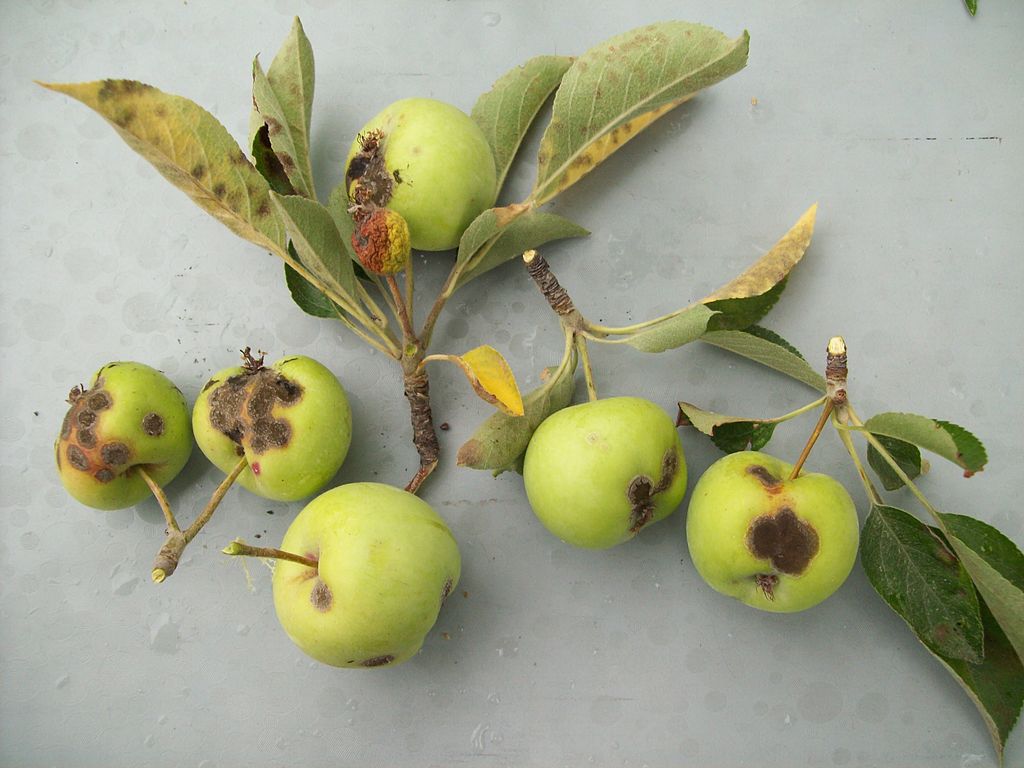
If the disease is severe, leaves may become twisted and puckered and begin to fall off.
4. Cedar Apple Rust
This fungal disease also occurs on apple and crabapple trees, though it may spread to various junipers and red cedars.
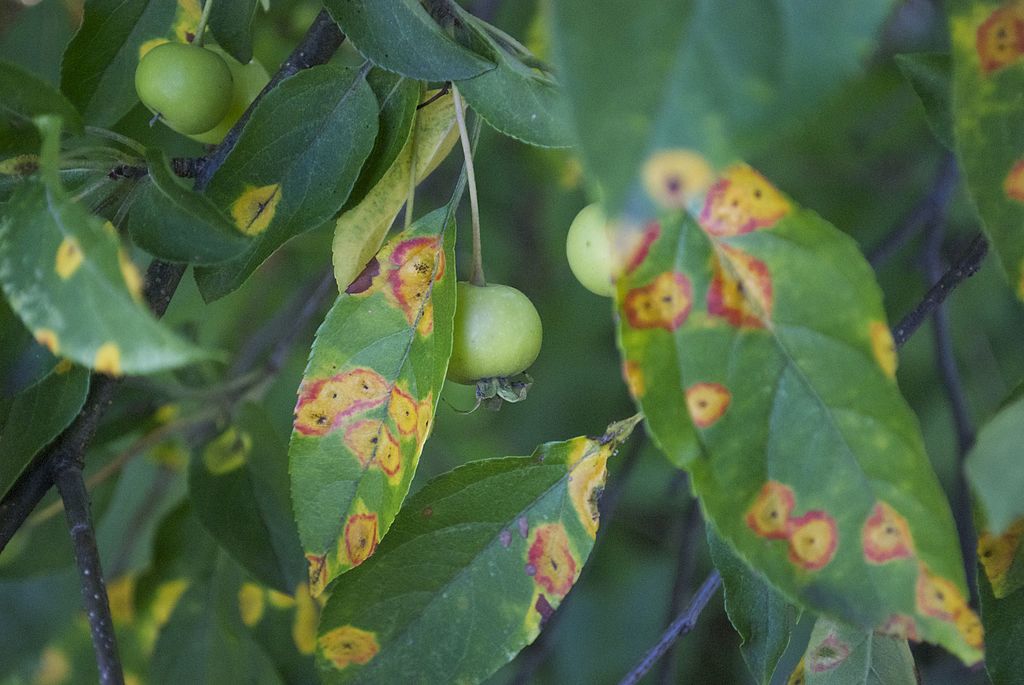
Cedar Apple Rust leaves pale yellow spots on leaves that turn orange in time. Small black fungal bodies may also form within the spots and exude orange fluid.
5. Thousand Cankers Disease
This disease is caused when Walnut Twig Beetles, which carry a fungus, tunnel into the bark of walnut trees and cause small “cankers” to form.
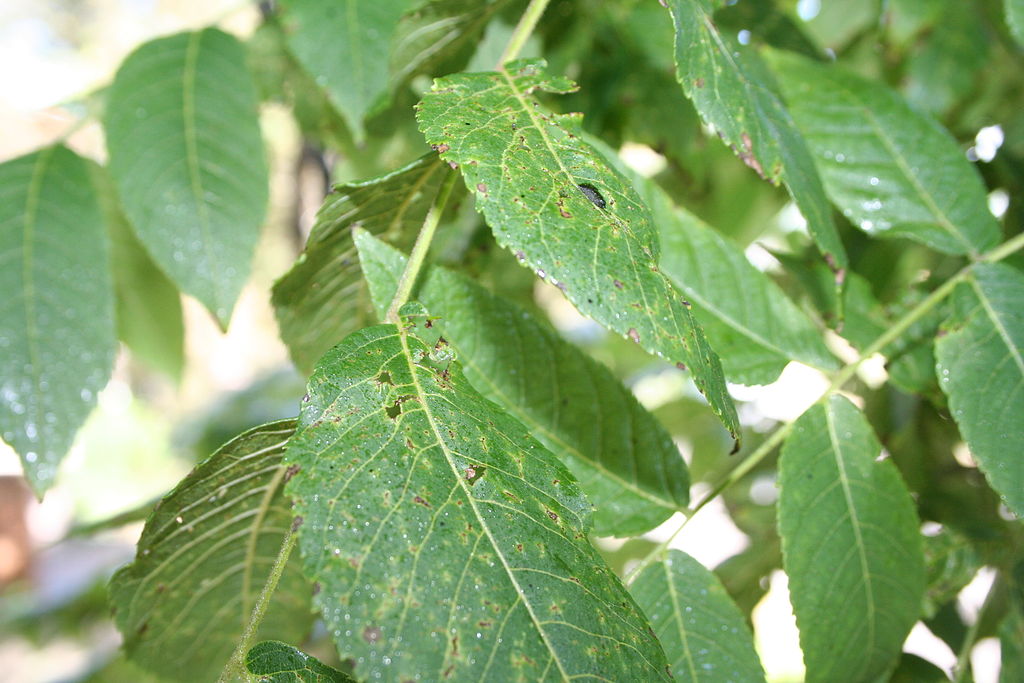
In time, repeated attacks and an increasing number of cankers and cause disruption of the movement of water and nutrients through the tree, which can ultimately kill it.
6. Anthracnose
This group of related fungal leaf and stem diseases is known to infect a variety of deciduous trees such as Dogwood, Maple, Oak, and other hardwoods.
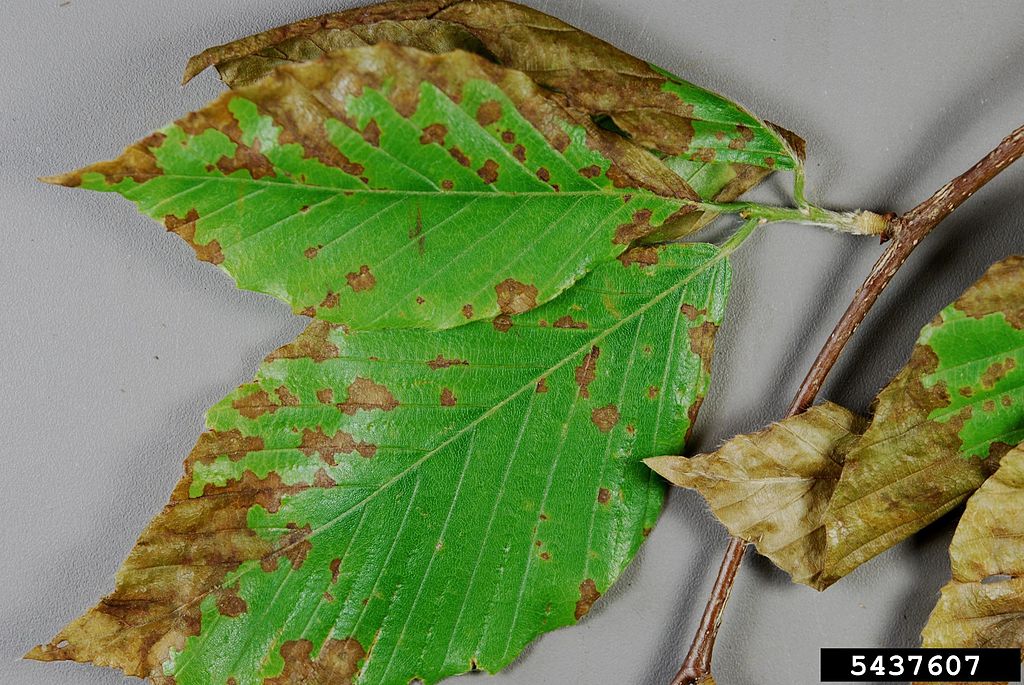
Anthracnose disease has symptoms such as small dead spots on leaves, premature defoliation, and twig death.
Understanding the Tree Disease Triangle
In order to understand how your tree could succumb to common tree diseases, you must understand the “Disease Triangle.” Unless you went to horticulture school, chances are it’s a new concept, but it’s an important one if you want to know how your trees are at risk.
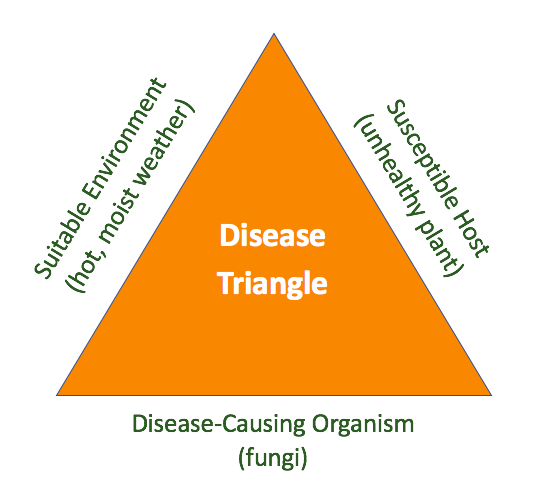
There are three factors that must be present and interact in order for a disease to develop. These include a susceptible host plant, a pathogen, and a suitable environment. All tree disease control practices relate back to breaking one or more of these components.
Tree Disease Treatment & Prevention
The recommendations for how to treat tree diseases will differ depending on the specifics of the disease. Oftentimes, the recommendations include cultural practices such as changes in irrigation or pruning. A lot of diseases can be aggravated by either too much or not enough water, as well as when air movement is limited in the foliage.
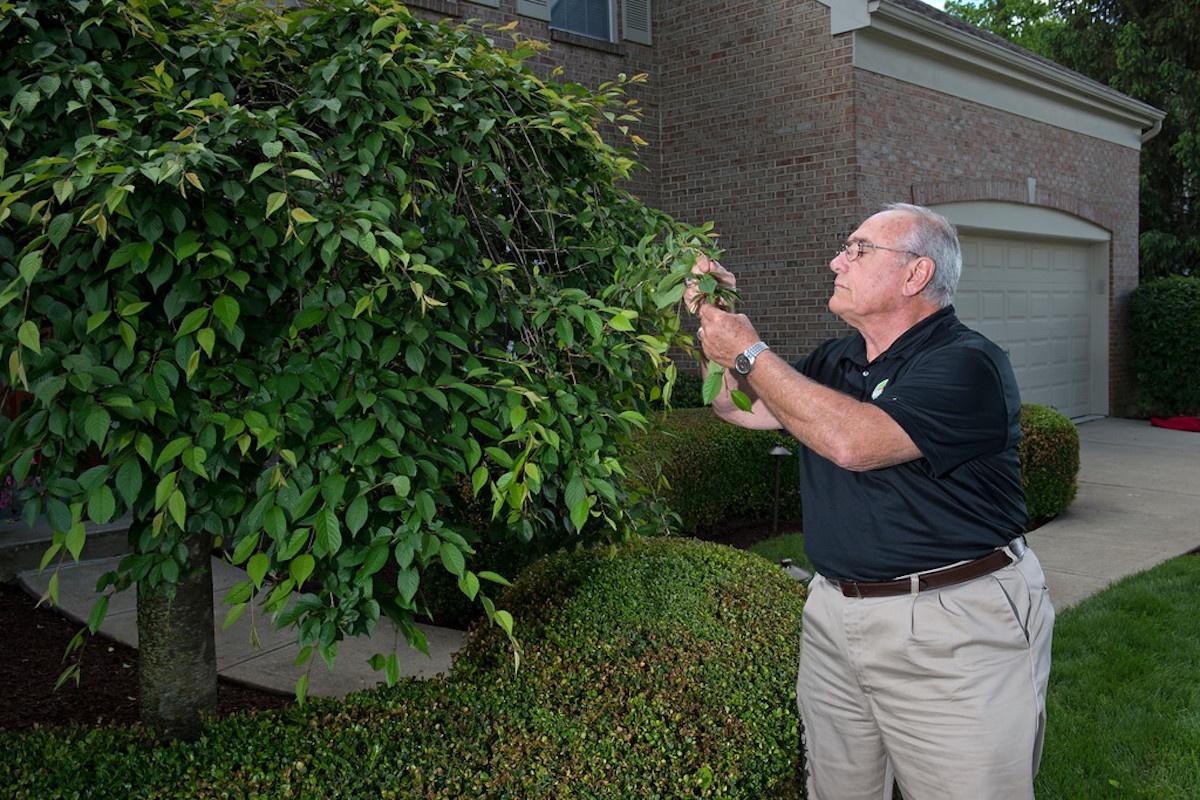
However, it’s not just irrigation or pruning recommendations that we might suggest. Some diseases are more rapidly spread when the fallen leaves lay under trees and the spores can be released again the next season. In that case, a good cultural recommendation would be to clean up the fallen leaves. Whatever the case may be, we can guide you on what your plant needs.
Beyond the cultural recommendations that Oasis Turf & Tree would make regarding tree and shrub health, our tree and shrub health care program also adds a layer of protection to help your trees and shrubs defend against disease.
Because the most important part of The Disease Triangle is the host plant’s health, it’s critical to choose a program that will address this. You can’t remove the pathogen in the air or soil (only suppress it some) and in all cases, you can’t control the environment (weather). Spraying fungicide only has limited impact if the host plant is not healthy to begin with. That’s why focusing on plant health is so important. Healthy trees and shrubs will be able to better defend themselves against threats.
Our program has a multi-pronged approach to help improve plant health, which we’ll explain:
Two Rounds of Deep Root Fertilization
Our slow-release, deep-root feedings occur in the spring to protect your evergreens and in the fall to cover your deciduous ornamentals.

We have found that the soils in our region are deficient in manganese, so we also add that into our micronutrient mix to ensure that the soil your trees and shrubs live in has what they need to thrive.
In the end, your plant is only as good as the soil it’s in.
Four Environmentally Responsible Applications
In addition, we also perform four protective application treatments that would shield your beloved plants from insects and mites. This is important as it will remove another compounding factor that could make your plant decline.

It’s quite possible that on top of disease, you might have an insect problem happening, too. Oftentimes, trees or shrubs die because they’ve succumbed to multiple issues. As we’re spraying, we are also looking for all of the common issues and taking notes as we go so that we can customize our approach to your plant’s needs. We’ll leave behind any cultural recommendations that could help better protect your plant against disease.
An Honest Approach to Ohio Tree Disease Control
Our Tree & Shrub Health Care program is a protection of your investment. By having a highly trained technician on your property, regularly inspecting your plants, you can feel confident that problems will be spotted early—when there is still time to save them.
However, with that being said, we also take an honest approach to tree disease control. The hard truth is, some of the common tree diseases have no cure. Apple scab and thousand cankers disease are two such examples. If we’re called in after a tree has already been severely infected, it may be too late—and we’ll tell you that. Some tree companies may not. They’ll just keep spraying and keep making money off of a tree that can’t actually be saved.
We’ll admit we’ve gotten odd looks when we’ve told customers to save the money they’ve set aside for treatment and use it for removal (a service we do not offer). We tell them to replace the tree with a better species for that location. We can even make some suggestions on what would work best. Then, we tell them to call us next year if they’d like to be proactive in protecting that new plant with our Tree & Shrub Health Care program.
In the end, we know that you’re paying us for peace of mind. You want to know that the trees and shrubs on your property are protected against disease and other threats. We’ll offer exactly that—whenever we can. If it’s a situation where it’s too late, or a tree was installed where it will never thrive, you can count on us to be honest with you. While a lot of companies don’t want to have that tough conversation, we want what’s truly best for you.
If you want to find out more about tree and shrub health care for your Cincinnati, Dayton, OH or Northern Kentucky home, call us today at 513-697-9090 to get your quote, let us help you choose a stand-alone program or bundle it with other services, and then sit back and relax knowing your trees and shrubs are in good hands.
Image Sources: needlecasts, powdery mildew, apple scab, cedar apple rust, thousand cankers disease, anthracnose
